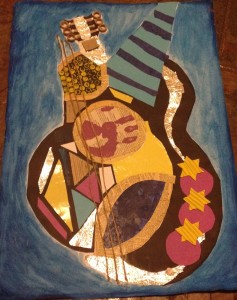Shields, David. Reality Hunger: A Manifesto. New York: Vintage, 2011. Print. Extract, PDF
The collage of thoughts really seemed to follow the author’s stream of consciousness – it just flowed from one thought to the next. The structure is what seems like random numbered thoughts that don’t necessarily connect to one another but are all under the umbrella term – collage. Point 362 states that ‘Nothing is going to happen in this book’ and story wise this is true. There isn’t necessary characters or a plot driving the book but if nothing happens in the book does that mean that is it deemed purposeless? I think there is still a point to be made even if the structure doesn’t conform to the usual carefully structured arguments in essays or books.
One thought: Is this an example of form driving content or content driving form? This could be case where the content it driving the form of it or the author has utitlised the form to help get the message across. Individually each “paragraph” has it’s own idea but as a whole what is trying to say?
I wonder if they edited the thoughts or it was just left in the order it was written in. At number 349 the author writes that ‘collage is, in a way, only an accentuated act of editing: picking through options and presenting a new arrangement’. But if I just wrote down all my thoughts and there wouldn’t necessary be in a structured order and no editing is it like a collage? Or does a collage involve editing and it can’t just be a random order? Does there need to be conscious decision in the order of the fragmented content?
In high school, we learnt about cubist painters like Pablo Picasso he would cut up paper fragments and materials similar to create collages. We also attempted our own collages inspired by Pablo Picasso’s guitar collage.
